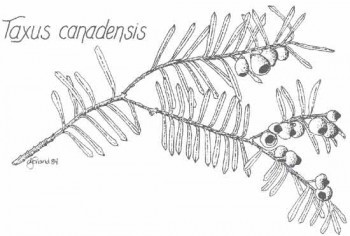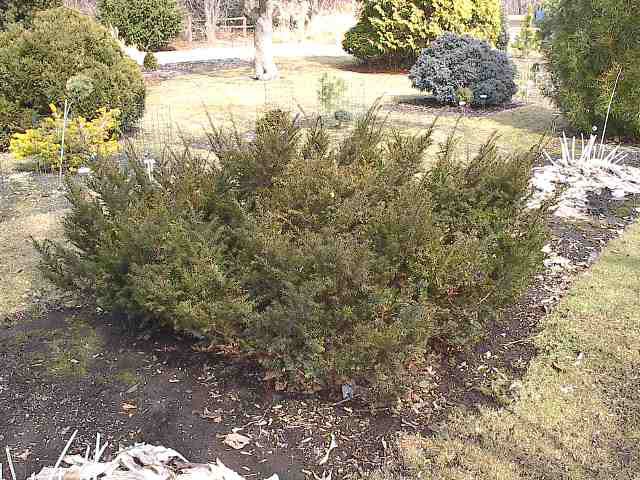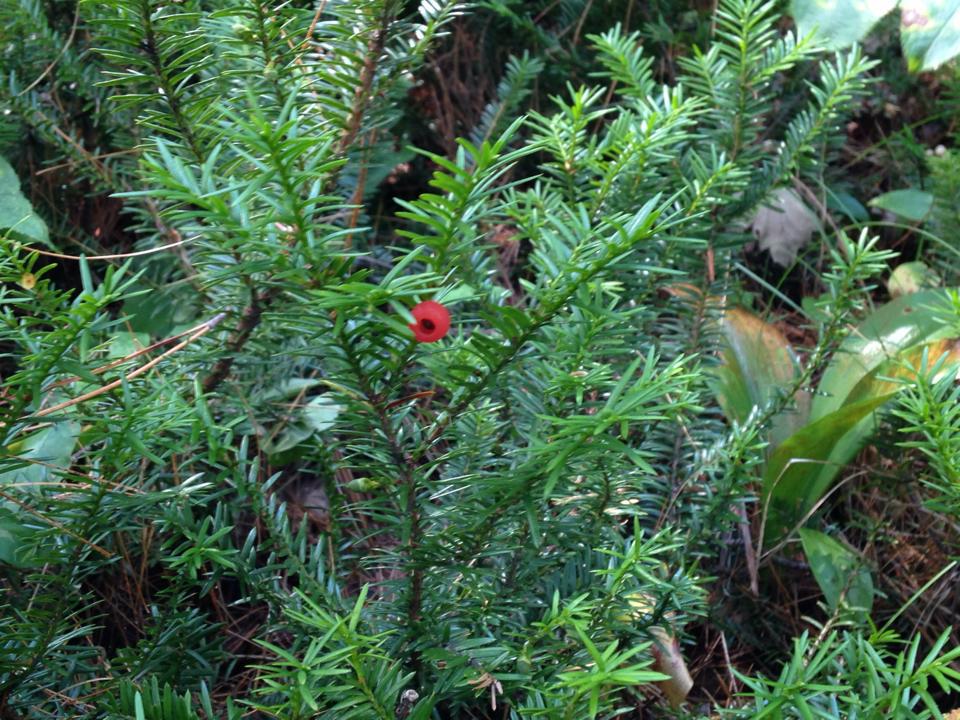
Taxus canadensis, first described in 1785 by Humphry Marshall (1722-1801), is commonly known as Canada or American yew, or as li du Canada and sapin trainard in the French language.
Description. Canada yew is an evergreen coniferous species of tree, usually found growing as a sprawling shrub, rarely exceeding 8 feet (2.5 m) tall. Although this conifer sometimes forms strong upright central leaders, these cannot be formed from spreading branches, but only from the original leader of the seedling plant. It is a monoecious plant - one of the few in the genus.
Bark is brown, thin and scaly.
Leaves are lanceolate, flat, and dark green in color; measuring 0.4 to 1 inch (1 - 2.5 cm) long and 0.06 inch (1.5 mm) broad, arranged in two flat rows on either side of the branch.
Pollen cones are globose, measuring 0.12 inch (3 mm) diameter.
Seed cones are highly modified, each cone containing a single seed partly surrounded by a modified scale which develops into a soft, bright red berry-like structure called an aril, which is open at the end.
Seeds are eaten by thrushes, waxwings and other birds, which disperse the hard seeds undamaged in their droppings.
Distribution. This species is a true American native, found in central and eastern North America, thriving in swampy woods, ravines, riverbanks and on lake shores. Locally called simply "Yew." Most of its range is well north of America's Ohio River. It is, however, found as a rare ice age relic in some coves of the Appalachian Mountains. The southernmost colonies are known in Ashe and Watauga Counties in North Carolina.
It is not to be recommended as a good landscape subject. Useful for ground cover in deep shade, and for wildlife cover in natural plantings. However, Taxus canadensis is being harvested in northern Ontario, Québec and Atlantic Canada as the plant is a source of the class of poisonous chemicals known as taxanes, which have been a focus for cancer research.


